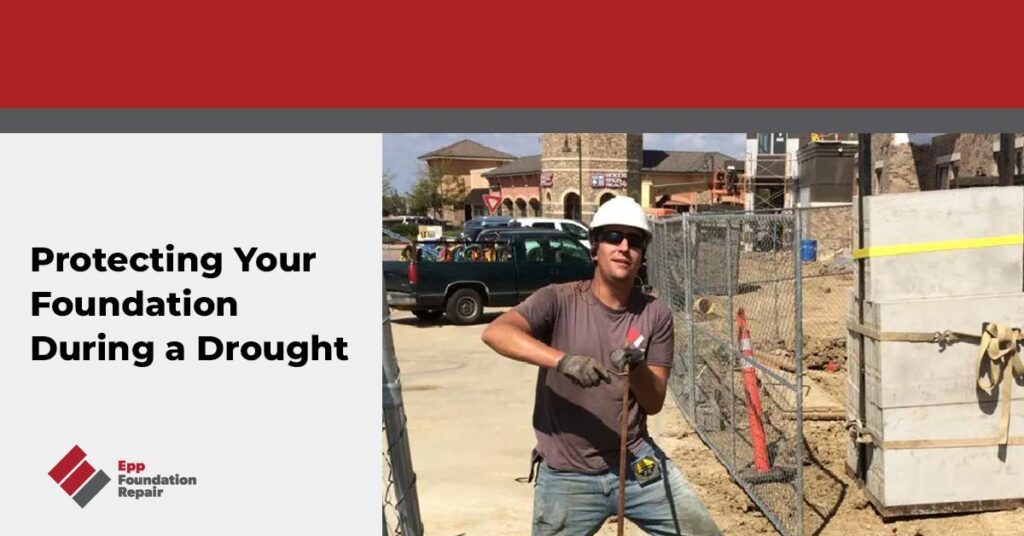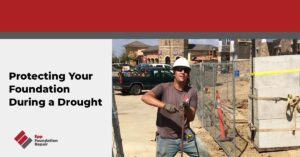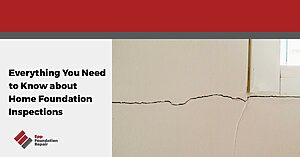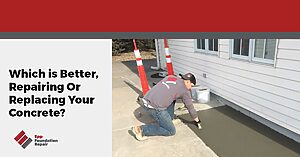Even though we’ve had plenty of rain in the last month, summer is just beginning, and it’s important to keep in mind the implications of drought. Most of us think about crop failure and water restrictions when it comes to drought. However, extended periods of low or no moisture can cause serious issues for your home’s foundation. When soil becomes extremely dry, it contracts and causes a home’s foundation to sink. Often, soil dries out, and settlement happens unevenly, causing cracks in the foundation.
For more information about foundation trouble, see Structural or Non-Structural? Understanding Foundation Cracks.
Prevention is the best medicine for foundation problems
After a home settles, there is nothing you can do to fix the issue other than hire professionals to perform structural repairs. For this reason, the best way to combat foundation issues caused by drought is to take preventative measures to keep soil from shrinking in the first place.
During severe drought, it’s safe to assume your soil needs some TLC. In less severe conditions (even when moisture levels aren’t extremely low), it’s still essential to check the condition of your soil. You can do this by walking around your house and simply looking at how the soil sits around your home’s foundation (you may need to pull back grass, plants, or mulch).
How to keep the soil around your foundation hydrated during drought
A gap between your home’s foundation and the soil is a sign of settlement. To close this gap, keep your soil healthy, and prevent foundation damage, you must keep the soil surrounding your home hydrated. There are a few ways to do this:
- Plant shrubs and other plants around your foundation – Plant roots hold the surrounding soil in place and keep it from eroding. Plants also provide shade for the soil, which slows the evaporation of its moisture content. Of course, plants must be watered frequently, which brings us to our next point.
- Water efficiently – It’s not uncommon for local or state governments to place restrictions on how often or how much you can irrigate, so it’s important to make the most of watering your landscaping. Check your sprinklers to make sure they’re operating correctly and set them to operate in several short cycles rather than one long one.
- Use mulch – It can be helpful to maintain a 2 to 4-inch layer of mulch under shrubbery surrounding your home. Mulch will prevent evaporation of moisture from the soil below it and allow what rainfall you do get to enter the soil more efficiently.
- Use drip irrigation or a soaker hose – A soaker hose has small holes that attach to an outdoor faucet and allows water to “sweat” through it at a reduced, steady rate. Lay the soaker hose around the perimeter of your home, as close to the foundation as you can get. When the gap between your home’s foundation and the surrounding soil closes, reduce the amount of water applied to the soil.
The best way to prevent structural damage to your home during a drought is to maintain proper moisture levels in your soil through specialized procedures. If your home has fallen victim to structural damage caused by droughts or other conditions, allow the experts at Epp Foundation Repair to make quality repairs and provide you with the information needed to prevent it from happening again!







